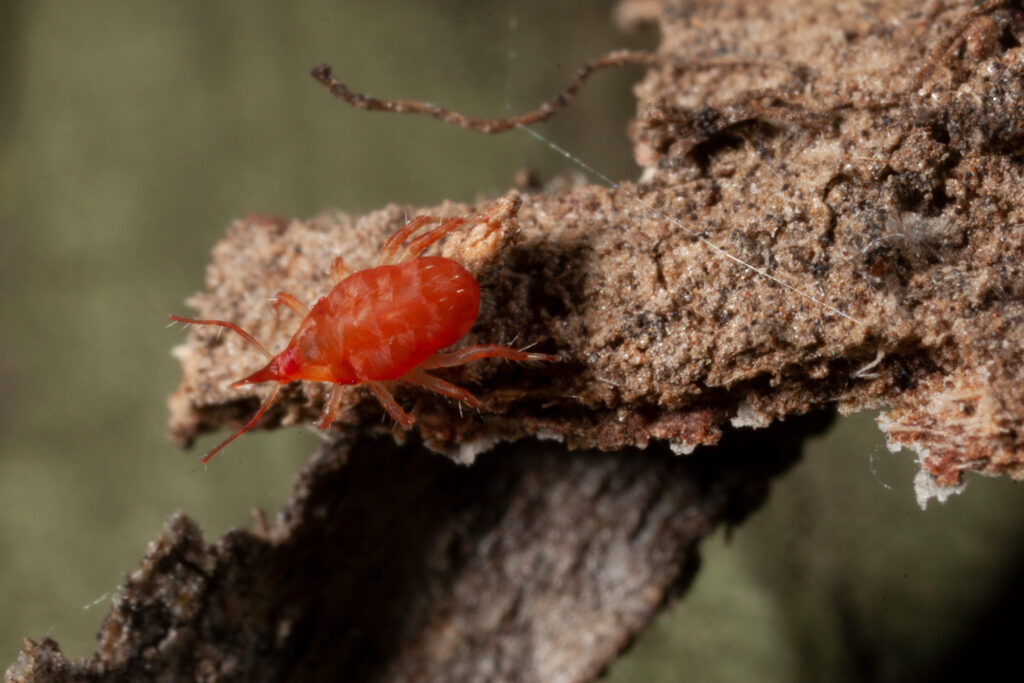Pest management is a critical component of successful crop production, and now more than ever there is the need to do so in a more sustainable way. But all too often, the process is made difficult by a lack of support, particularly when it comes to safeguarding beneficial insects.
That’s why, as part of the GRDC investment, the Australian Grains Pest Innovation Program (AGPIP), Cesar Australia and the University of Melbourne addressed this issue with the creation of the Beneficials Chemical Toxicity Table, an easy-to-use guide outlining how commonly used insecticides impact key beneficials to the Australian grains industry.
The guide has already proved to be a valuable tool for growers, and the team have been working to include new data for the updated table to make it an even more valuable resource for growers.
Managing beneficials: Overcoming the challenges
While insecticides can be a valuable tool for growers in managing pests, they can often cause substantial harm to populations of beneficial insects, particularly broad spectrums such as synthetic pyrethroids and organophosphates. As a result, we lose the natural pest suppression provided by such insects, and this often leads to secondary pest outbreaks; where a pest that was once being held in check by a predator suddenly becomes problematic.
Growers can promote the pest suppression abilities of beneficial insects by adopting management practices that support and maintain their populations. However, implementing such practices has been challenging as there was no integrated, scientifically proven guide to the toxicity of commonly used insecticides to beneficials. That was, until the creation of the Beneficials Chemical Toxicity Table.
Agronomist’s give their stamp of approval
The Beneficial’s Toxicity Table was first published in April 2022, and summarises the impacts of various insecticidal active ingredients on a range of beneficial insects: such as ladybird beetles, parasitoid wasps, lacewings, and hoverflies.
Developed in consultation with growers and chemical industry representatives, research focused on the chemicals, the field rates, growing environments, pests and beneficials specific to the grains industry. This was the first time that such a guide had been developed for Australian broadacre cropping.
The guide has proven useful in helping growers make informed management decisions on pesticides that can control pests with minimal harm to beneficial insects, when chemical use cannot be avoided.
For example, agronomist Hamish Verco, finds the toxicity guide to be a valuable reference in the field. He stated, “I work in the organic/biological space, so my recommendations are often to avoid insecticides all together, but this is not always possible for some. So, where growers must, it is great to empower them with knowledge on what products they can use that may have less effects on beneficials.”
Since the guide’s initial publication, lead scientist Dr Rosie Knapp and the team at Cesar Australia have continued to refine the toxicity table and gather new data on important beneficial insects.
Using the table: Tips and tricks
The data collected on beneficial insects covers a wide range of species, which are presented in a consolidated grouped form in the table. For example, recent findings on snout mites, which are important predators of the red-legged earth mite and lucerne flea, are now incorporated into the ‘predatory mites’ category.

The toxicity ratings have been determined by averaging the results across chemicals and insect species and are arranged in a descending order. The least toxic chemicals begin at the top of the table and progress downward toward the more toxic chemicals.
The chemicals with a relatively low overall impact are highlighted in green, those with a moderate impact are shaded yellow. Chemicals that have a high overall impact are orange, whilst those with a very high impact are distinguished with red. Cells with split ratings are represented by a diagonal slash.
The table can assist in making targeted spray decisions that minimize harm to essential beneficial insects and maximize biological control against a specific pest. For example, if you were having trouble with red legged earth mites but you have snout mites in your field, you may want to choose an insecticide with a low impact on predatory mites.
If monitoring for beneficials isn’t practical, the table can still be used to identify which pesticides have the lowest overall toxicity across all beneficial species, with particular mind to tough little generalist predators such as rove beetles.
Take control with the table
Take action now with the toxicity table to make well-informed choices regarding insecticide usage, ensuring effective pest management while safeguarding beneficial insects. By adopting a targeted and environmentally friendly approach to pest management through informed decision-making, you can promote the long-term health of your agricultural ecosystem.
Acknowledgments
This research is being undertaken as part of the Australian Grains Pest Innovation Program (AGPIP). AGPIP is a collaboration between the Pest & Environmental Adaptation Research Group at the University of Melbourne and Cesar Australia. The program is a co-investment by the Grains Research and Development Corporation (GRDC) and the University of Melbourne, together with in-kind contributions from all program partners.
Thanks to Rosie Knapp (Cesar Australia) for technical inputs when developing the article and her work in leading the project, and thanks to Jacquie Murphy (Cesar Australia) for her assistance in creating the table.
